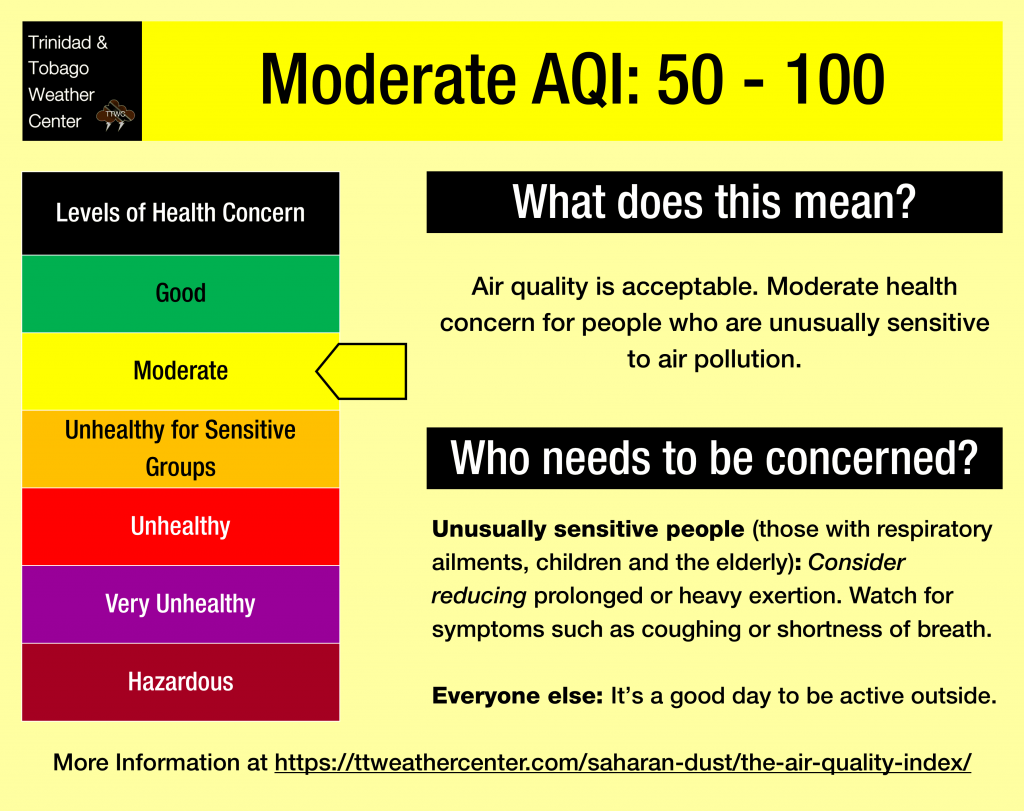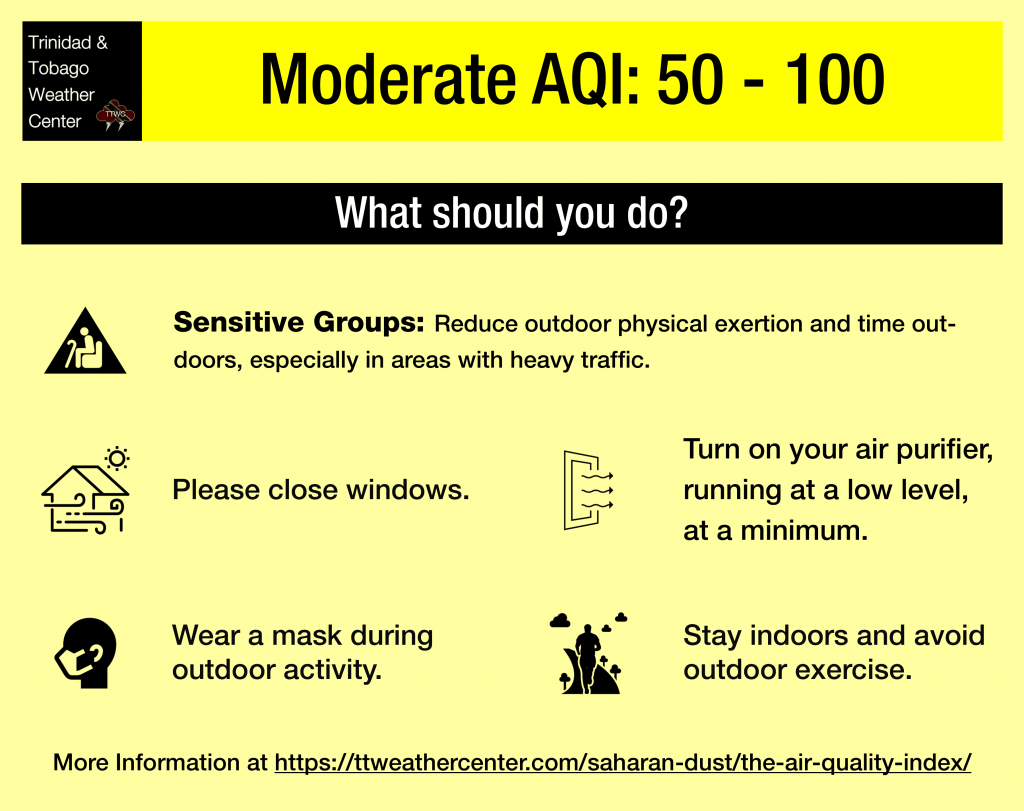Occasional mild to moderate surges of Saharan Dust are forecast to move across the region over the next ten days, similar to what T&T has already experienced this past month.
What you need to know
— Saharan Dust Surges: Two mild to moderate surges of Saharan Dust, generally following tropical wave activity, are forecast on September 21st and September 24th, interspersed by days without any dust present.
— Impacts: Through the next seven to ten days, air quality levels across Trinidad and Tobago are forecast to remain between good and moderate.
— What Should You Do: Sensitive groups should take the necessary precautions during periods of Saharan Dust presence, but concentrations will not be significant.
Current AQI Levels Across T&T
The official air quality monitoring stations from the Environmental Management Agency (EMA) at Point Lisas and Arima are reporting good air quality levels. Stations at Beetham, Point Lisas, and Signal Hill, Tobago, are not reporting PM2.5 or PM10 data as of Tuesday afternoon.
These measurements are based on PM2.5 (particulates the size of 2.5 micrometers and smaller, usually associated with increases in Saharan Dust, vehicle exhaust, and smoke) and PM10 particulates.
Over the last 24 hours, visibility remained unaffected by Saharan Dust and smoke at the A.N.R. Robinson International Airport at Crown Point, Tobago, and at the Piarco International Airport, Trinidad.
Saharan Dust Forecast

Saharan Dust levels remain at negligible levels through Thursday, September 21st, 2023, where increasing dust is forecast mainly north of the country, as the Intertropical Convergence Zone and a tropical wave bring rainfall to Trinidad and Tobago. However, marginally hazy skies are forecast.
Dust will abate into the weekend, from Saturday, with another mild surge returning on Monday, September 24th, 2023, through September 27th, 2023, with higher dust levels remaining north of T&T.
Another period of negligible dust is forecast from Friday, September 27th, 2023, through the end of the month.
Through the next seven to ten days, air quality levels across Trinidad and Tobago are forecast to remain between good and moderate. Sensitive groups should take the necessary precautions during the aforementioned periods of Saharan Dust surges.
What does this mean for you?


We’re in a period where the Intertropical Convergence Zone and tropical waves and occasional tropical cyclones may shield Trinidad and Tobago from the Saharan Dust events. While Tropical Waves play a notable role in moving dust across the Atlantic and the Eastern Caribbean, these periodic tropical waves also improve air quality.
The concentration of the dust that follows the wave depends on its strength as it moves off the West African Coast. This is because of stronger thunderstorms across Central Africa. As strong winds move downward and outward from these thunderstorms, the wind kicks up dust as it moves across parts of the Saharan Desert and transports it into the upper atmosphere. This “plume” of dust follows the axis of the wave as it progresses westward into the Atlantic.
Dust that makes it into the upper levels of the atmosphere can then get transported across the Atlantic Ocean. The plumes of dust eventually affect the Eastern Caribbean.
Larger, more concentrated plumes of Saharan dust begin in April and continue through November.











